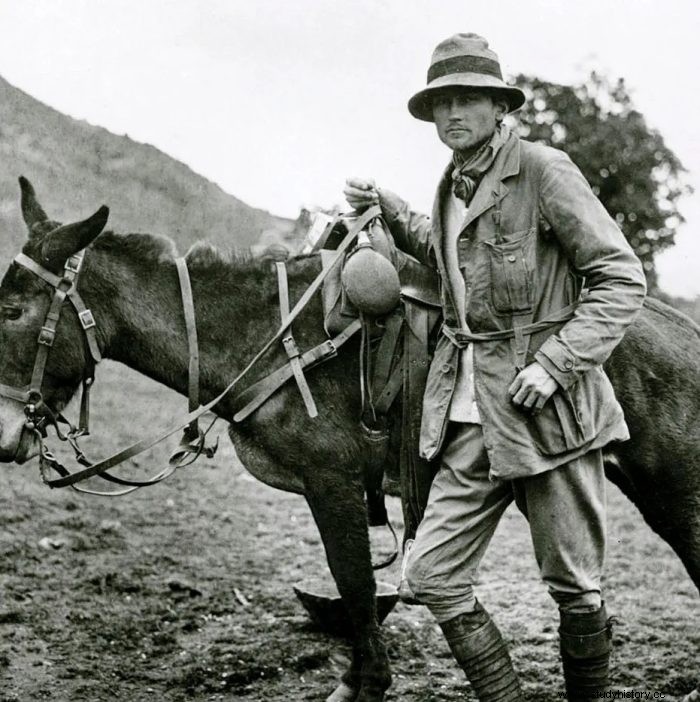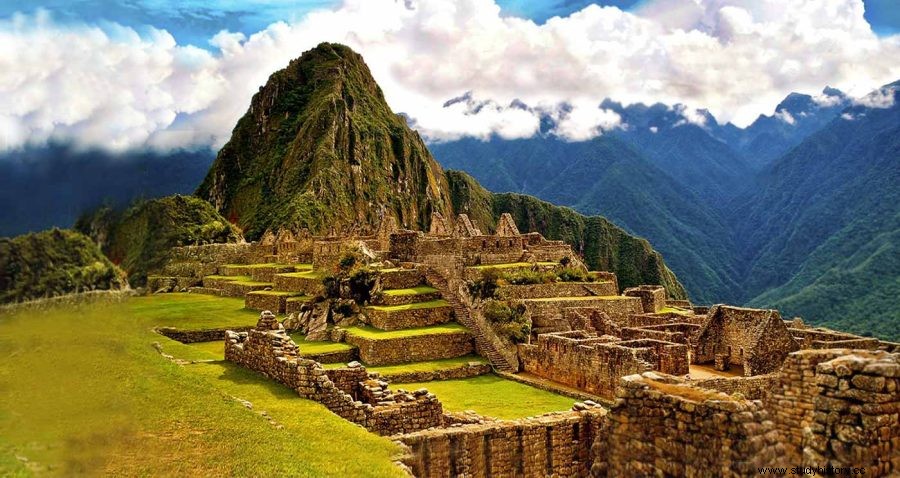On July 24, 1911, Yale University history professor Hiram Bingham III climbed to the top of a mountain ridge in Peru and encountered one of the most amazing sets of ruins:Machu Picchu. His book, Cradle of Gold:The Story of Hiram Bingham, has been an inspiration to many artists and authors.

However, he is not the first to set foot on these ruins. In 1887, German explorer Augusto Berns excavated an area near the location of Machu Picchu. And, in 1902, a Peruvian named Augustin Lizarraga inscribed his name on the side of a temple wall. Hiram will say with a certain amusement in 1922 “In the same sense that Christopher Columbus is credited with having discovered America, it is fair to say that I discovered Machu Picchu. Others had visited the continent before Columbus, but it was he who made it known to the civilized world."
The superior character of the stone work, the presence of these splendid edifices and what appeared to be an unusually large number of finely constructed stone dwellings, led me to believe that Machu Picchu might prove to be the most largest and most important ruin discovered in South America since the time of the Spanish conquest. (1)
Originally, Hiram had gone to Peru to try to find the last capitals of the Incas, Vitcos and Vilcabamba. Discovering the location of Machu Picchu was therefore fortuitous, but his method was not:he was thus the first person to collect on the spot as many oral testimonies as possible, to use the names of the places mentioned in the Spanish chronicles and to help maps of ancient Peruvian geographers. His enthusiasm was matched only by his thirst for discovery. Another name enters the equation:Curtis Farabee, an explorer, also from Hardvard and telling Hiram that there were probably lost cities above Urubamba.
The summer of 1911 will be decisive because, leaving Cusco, he strolls through the so-called Sacred Valley and sees one of the Peruvian guides drowning in the Urubamba River. Sign of the gods, he will reach Macchu Picchu a few days later, on July 24, 1911.
Three days later, I reached Machu Picchu in the company of Dr. Eaton, our osteologist, and Mr. Erdis, who, as Archaeological Engineer, was to be in charge of the general work of cleaning and excavating the ruins. . (2)

After meeting a second group of informants, he will reach “Espiritu Pampa” towards the Amazon, the modern name for the vanished city of Vilcabamba, aka the true lost city of the Incas. It was here that the last Inca emperor, Tupac Amaru, resided before being captured by the Spaniards in 1572. If this emblematic place is historically more important, it is Machu Picchu that will make Hiram a celebrity.
Machu Picchu is essentially a city of refuge. It is perched on top of a mountain in the most inaccessible corner of the most inaccessible section of the Urubamba River. As far as I know, there is no part of the Andes that has been better defended by nature. (3)
“Espiritu pampa” was then only the shadow of a glorious past:completely covered with vegetation, the stone buildings that his native guides show him are moderately interesting, especially compared to the location of Machu Picchu. He will never come back. Worse still, in his book he ignores the geographical clues that led him to Espiritu Pampa and twists the evidence to show that Machu Picchu is in fact the legendary city of Vilcabamba. It is also a desire of the explorer to highlight the site. But Vilcabamba was above all built, by the Incas, to regroup and survive, after a terrible flight.
Hiram Bingham was not alone in this adventure. Beyond the guides, his intuition and his camera were essential to him. But even more, during his second and third expeditions (in 1912 and 1915-16), the National Geographic Society supported Hiram's work. During the second expedition, Hiram cleared and excavated in the central architectural core as well as studying the rock tombs on the eastern slopes. Perhaps that is a noticeable difference, the exposure the West has given the site.
But still today, Peru is suing Yale to recover certain artifacts that Bingham recovered from the expeditions.
But why have such a building nestled in the clouds? As part of the extension of their empire, the Inca emperor Pachacutec had made it a fortress overlooking an area. but above all it was a spiritual place
The artisans of Machu Picchu had not only skill, but also originality and ingenuity. Their pottery is varied in its forms and attractive in its ornamentation. They knew how to plan great architectural and engineering works and carry them out. (4)

Born in Honolulu, Hiram had an early desire to discover what lies beyond his island. From an early age, he will devour the Adventures of Huckleberry Finn, Mark Twain, or the novels of Rudyard Kipling. These adventures amaze him who finds himself, so to speak, stuck in an archipelago with limited contours. The return to the United States with his family in 1891 will give him the opportunity to concentrate on this passion that is history.
After Yale University, he obtained a doctorate in history on Spanish America. But where did this fascination come from? Having grown up in a Protestant family, on a paradisiacal oceanic island, the novels of his childhood will perhaps have got the better of his inclinations when, from 1901, President Theodore Roosevelt exalted Pan-Americanism and the search for the remains of the continent. But more prosaically, thanks to his rich wife, Hiram will no longer have any obstacle to discover the buried treasures of South America.
Although he was not officially the first to discover these sites and his methods of hoarding – although part of a time when the desire to do good was sometimes mixed with commercialism – leave something to be desired today, Hiram Bingham is still another Christopher Columbus with its good and bad aspects.

Sources and references
1-2-3-4 Journal of Hiram Bingham – National Geographic Society Article (April 1913)
All information obtained on this article comes from National Geographic
